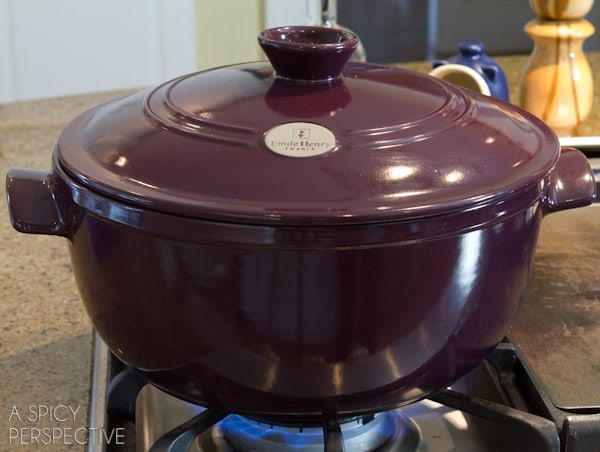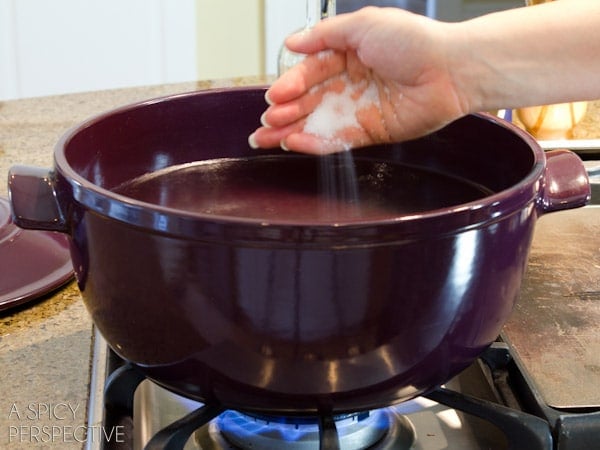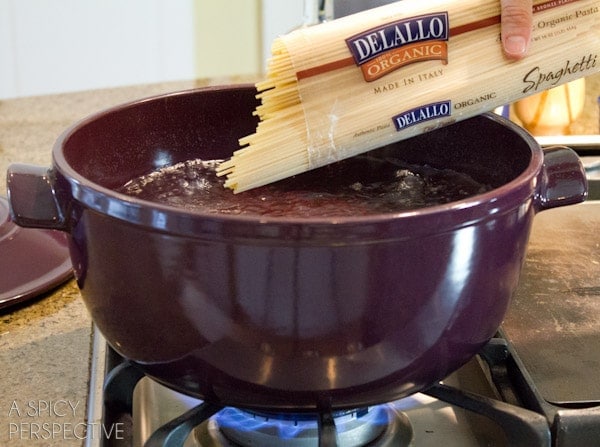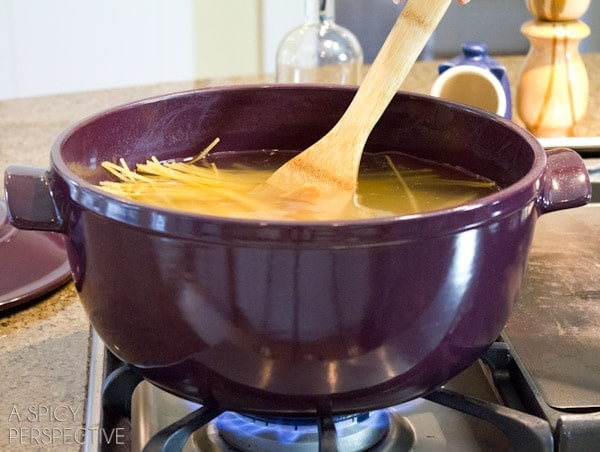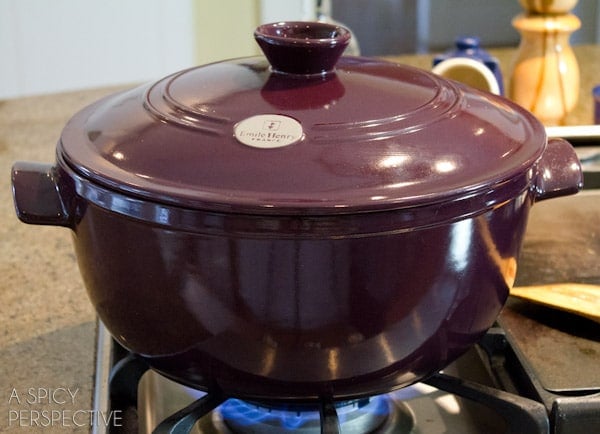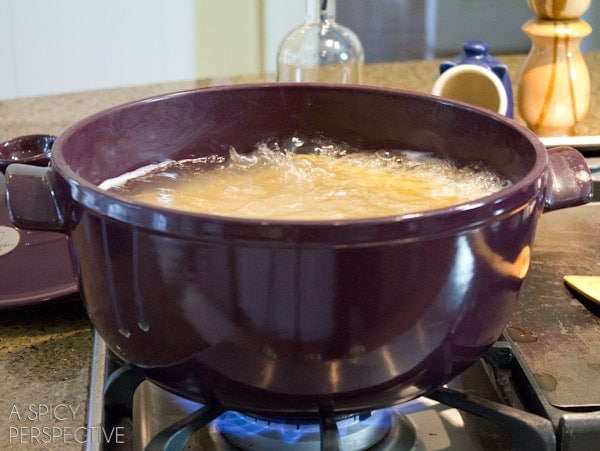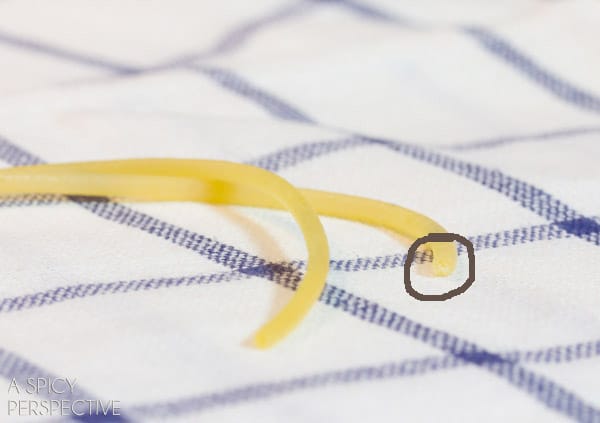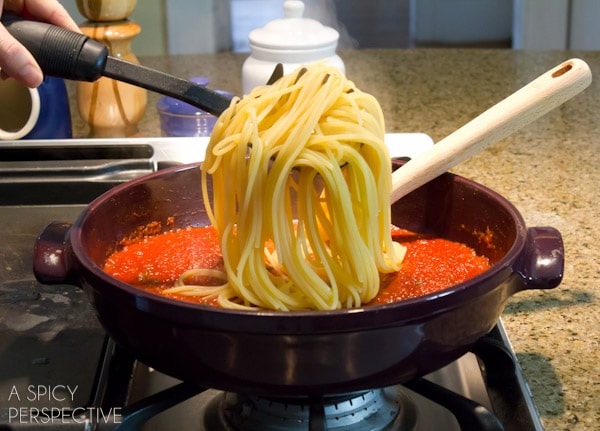Cooked Pasta
“So what is al dente anyway?” Al dente is the optimal desired texture when cooking fresh pasta and grains. It refers to a firm, but not hard consistency. The actual translation of the Italian phrase al dente, is “to the tooth” meaning there is an ever-so-slight resistance when you bite into it, but not a crunchy hardcore. Cooking pasta seems like an easy chore, but often leads to mushy, slimy or sticky pasta if you’re not careful. It’s best not to throw the pasta in the water and forget about it, as so many of us do. Me included, on occasion. Today’s “How to Cook Pasta” tutorial will break down the causes of some classic noodles mishaps. For further ins-and-outs of pasta cooking, visit my friends at DeLallo. They are the ninja masters of pasta.
How to perfect cooked pasta
The first step to perfect pasta cooking is to boil pasta in a lot of water. When you use a pot that is too small and doesn’t hold enough water, the pasta boils in the starch it releases, at concentrated levels. This makes your pasta slimy. Slimy pasta is a bad thing. When you pull out a large pot for pasta cooking, GO BIG and fill’er up! 5-6 quarts of water is appropriate for one pound of pasta.
Thoroughly salt the water. Salting your pasta after you cook it doesn’t enhance the flavor. It just makes it taste, well… SALTY. When pasta is cooked in salt water, it absorbs the sea salt and helps to bring forth it’s natural flavors. Add enough salt to the water to make it taste like the ocean. A tablespoon of salt is not enough! In a large 5+ quart pot, that should be between 2-4 tablespoons. It seems like a lot of salted water, but the pasta will absorb just enough. Next, bring the water to a rolling boil over high heat. You can place the lid on the pot to get it to boil faster. Side Note: For years I added a little olive oil to the water, so that it wouldn’t boil over. A clever trick, right? The problem with this, is it lubes down the strands of pasta so that nothing sticks to them, or absorbs in them. So when it’s time to sauce the pasta, you have a problem. Restaurant quality pasta is finished in the sauce so that the pasta can absorb the flavors of the pasta sauce. Therefore, it’s best to skip the oil. Once the water is raging in the pot, add the pasta. DO NOT add the pasta before you’ve got a serious boil going on. Letting your pasta sit in hot water, that’s not hot enough to actually cook it, makes it mushy.
Stir the pasta so it won’t stick together. This is a significant step – nobody wants sticky pasta! Then place the lid back on top for just a minute or two.
Doing this will help bring the water back up to that essential boil as fast as possible. Once you’ve got a rolling boil again, remove the lid. Stir a second time and cook the pasta as directed on the package. I like to check my pasta about two minutes before the package cooking time, just to be safe. Now it’s time for the Bite Test. (Remember when people use to throw pasta against the wall to check if it was cooked enough? Weren’t we crazy in the 90’s?) Remove a strand of pasta from the pot and bite. How does it feel to the tooth? Firm but not hard??? Look at the end of the pasta you just bit. If you see a light-colored circle, the pasta is not quite ready. See how this strand has a white circle? Not quite ready. If you see just a white dot the size of a pin-prick, the pasta is almost al dente.
The white dot signifies it’s time to drain and strain the pasta in the sink.
Taking the pasta out of the boiling water, just before it reaches al dente, allows you to cook the pasta in the sauce for a few minutes longer. That way it can absorb all those wonderful saucy flavors without overcooking.
Strain the pasta in a colander, or quickly scoop it out with a pasta serving spoon. DO NOT rinse the pasta. Ever. You’ll wash away the starch that helps the sauce stick to the pasta. Place the pasta straight into the warm sauce you have ready-and-waiting and toss. Cook 1-2 minutes before turning off the heat.
When straining the pasta, make sure to reserve some of that salty-starchy pasta water. I usually save a cup or so. Pasta water is a magic ingredient in many pasta dishes. Once you stir the pasta into the sauce, if it’s a little thick or lacking flavor, add a bit of pasta water. You’ll be surprised at the difference it will make.
Our favorite types of Pasta:
Angel Hair Spaghetti Fettuccine Linguine Fusilli Bucatini Ravioli Tortellini
Pasta Recipes You Will Love
Chicken Pesto Pasta Mediterranean Shrimp Pasta Clam Pasta Skinny Pasta Primavera Creamy Tuscan Chicken Pasta Pasta with Creamy Zucchini Sauce – Skinny Taste
Share This Recipe With Friends!

